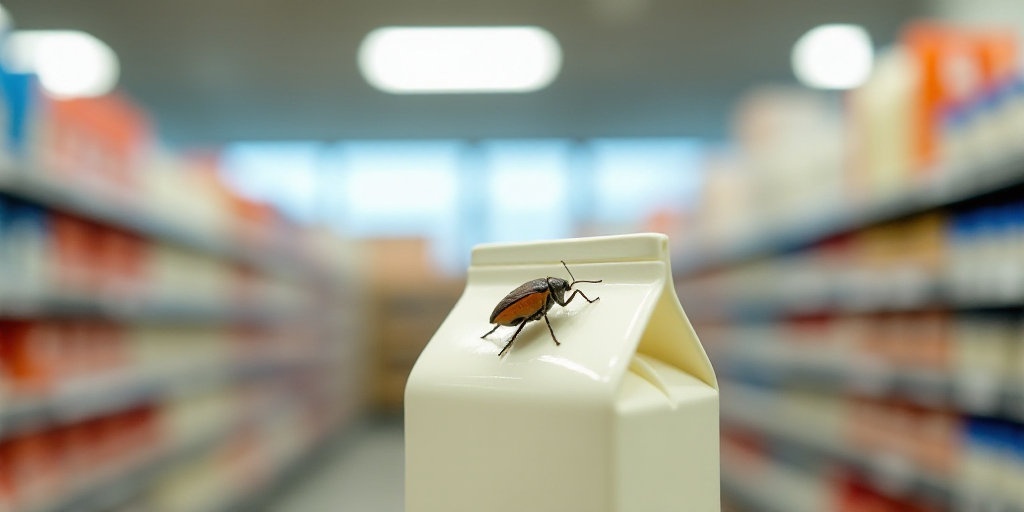Unconventional Alimentary Alternatives in a Changing World
As population growth, climate change, and water stress necessitate a reevaluation of our diet, Mexico begins to look towards unconventional food sources. Among these possibilities is cockroach milk, an intriguing and disruptive option that has captured the attention of scientists, nutritionists, and biotechnology entrepreneurs for its high nutritional density and potential functional applications.
Nutritional Powerhouse: Cockroach Milk’s Unique Composition
According to an analysis published by The Food Tech, this crystal-like liquid comes from the Diploptera punctata, a viviparous cockroach species, and contains all essential amino acids, lipids, complex carbohydrates, and a higher energy charge compared to cow’s milk. It does not involve milking insects but rather replicating the compound through advanced genetic expression techniques in cell cultures.
- It contains essential fatty acids and bioactive peptides that promote cellular regeneration.
- Its slow digestion allows for sustained energy release, ideal for individuals with physical wear, athletes, or clinical patients.
These attributes make cockroach milk a promising candidate for integration into functional foods, supplements, energy bars, or specialized formulas for the elderly or patients with malnutrition.
Regulatory and Cultural Hurdles in Mexico
Despite its advantages, the adoption of cockroach milk faces legal and social barriers. Neither the FDA in the US nor the EFSA in Europe have approved its commercial use. In Mexico, COFEPRIS requires extensive studies on toxicity, traceability, and allergenicity before considering authorization.
Additionally, there is significant cultural resistance to consuming products derived from insects. However, this perception might change if these ingredients are presented as powders, capsules, or discreetly incorporated into familiar products. The key will be alimentary education, transparent labeling, and clear communication about its benefits and biotechnological origin.
Latin America’s Potential in the Alimentary Revolution
The region boasts biodiversity and technical knowledge to lead research in alternative proteins. In Mexico, the traditional use of edible insects—such as chapulines, escamoles, and maguey worms—could facilitate a less abrupt cultural transition if presented within an innovative technological framework.
For foodtech startups and entrepreneurs, exploring these proteins means not only addressing climate change but also offering a unique selling point to modern consumers, who are increasingly concerned about the origin and impact of their food.
Thus, cockroach milk is not a mere curiosity but part of an emerging ecosystem of solutions alongside cultivated meat, fermented mushrooms, and microalgae. Its future hinges on three critical factors: scientific validation, regulatory approval, and cultural acceptance.
In Mexico, we are still in the observation phase, but interest is growing. It may not be long before this ingredient appears—perhaps discreetly—on store shelves.
Key Questions and Answers
- What is cockroach milk? It’s a crystal-like liquid derived from the Diploptera punctata cockroach, rich in essential nutrients and energy.
- Why is it significant? Its high nutritional density and potential functional applications make it a promising candidate for integration into various food products.
- What challenges does it face? Regulatory hurdles, such as approval from the FDA and COFEPRIS, along with cultural resistance to insect-derived products.
- How could it impact the food industry? It offers a sustainable protein source, addressing climate change concerns and providing unique selling points for food manufacturers.
- What’s the potential in Latin America? The region’s biodiversity and technical knowledge position it to lead research in alternative proteins, with Mexico’s traditional use of edible insects facilitating a smoother cultural transition.






